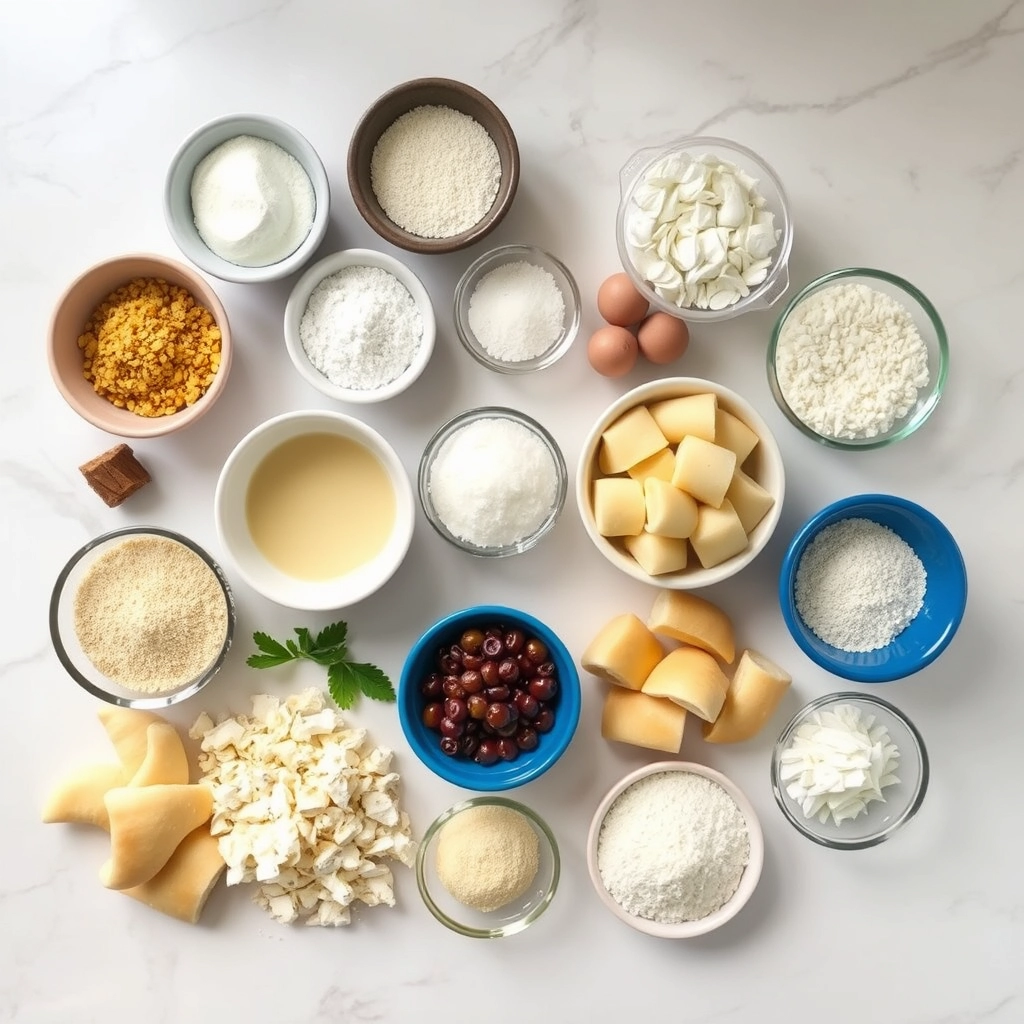Introduction
Hi there! I’m Emily, the heart and soul behind brekcakes.com. From my earliest memories, the kitchen has always been a place of warmth and creativity. It’s where I discovered the magic of turning simple ingredients into extraordinary meals and learned that the best dishes are often made with love as the main ingredient.
There’s something undeniably comforting about pulling a tray of golden, flaky Homemade Crescent Rolls from the oven. Whether you’re hosting a holiday gathering or simply craving a buttery treat, these rolls bring joy to every bite. Moreover, they remind me of lazy Sunday mornings and family dinners where laughter filled the air. If you’ve ever wanted to recreate that cozy feeling in your own kitchen, this recipe will guide you every step of the way.
Homemade Crescent Rolls are a timeless classic, blending simplicity with irresistible flavor. Unlike store-bought versions, these rolls boast a tender, layered texture and a rich, buttery aroma that fills your home. They pair perfectly with soups, salads, or even stand alone as a snack. What makes them special is how they bridge tradition and convenience—you can whip them up with pantry staples, yet they feel like a labor of love. At brekcakes.com, we celebrate recipes that balance ease and heart, just like our easy dinner ideas or the warmth of comfort food favorites. Whether you’re a beginner or a seasoned baker, these rolls invite you to slow down and savor the process.
Why I Love This Recipe
Homemade Crescent Rolls hold a special place in my heart because they were the first thing I ever baked with my grandmother. She taught me how to knead the dough just right and how to roll it into those perfect crescent shapes. Even now, the smell of them baking takes me back to her kitchen, where patience and passion turned simple ingredients into something magical. Every time I make them, I feel that same connection—to her, to family, and to the joy of sharing food made with care.
Health and Nutrition
Why it’s good for your body
Homemade Crescent Rolls offer more than just delicious flavor—they also provide several nutritional benefits. First, when you make them at home, you control the ingredients, avoiding unnecessary additives. For example, using whole wheat flour boosts fiber, which supports digestion and keeps you fuller longer. Additionally, Homemade Crescent Rolls often contain healthy fats like butter or olive oil, which provide energy and help absorb fat-soluble vitamins.
Moreover, these rolls can be a source of essential nutrients. If you enrich the dough with eggs or milk, you add protein and calcium, which strengthen muscles and bones. Even better, Homemade Crescent Rolls pair well with nutrient-dense toppings like avocado or lean turkey, turning them into a balanced snack or meal. Finally, baking them fresh ensures you avoid preservatives commonly found in store-bought versions, making them a cleaner choice for your body.
How it fits in a healthy lifestyle
Homemade Crescent Rolls easily fit into a balanced diet when enjoyed mindfully. For a heart-healthy twist, use olive oil instead of butter and top them with omega-3-rich smoked salmon. If you follow a high-protein diet, pair them with scrambled eggs or a scoop of Greek yogurt for a satisfying breakfast. Even those watching their carb intake can enjoy smaller portions alongside a protein-packed salad.
For gluten-free alternatives, swap regular flour for almond or coconut flour, as detailed in our gluten-free baking guide. Planning meals ahead? Homemade Crescent Rolls freeze well, making them a convenient option for busy weeknights. Explore more meal prep ideas to keep your diet on track without sacrificing flavor. With simple tweaks, these rolls can suit almost any dietary goal while keeping meals enjoyable.
PrintHomemade Crescent Rolls
Description
Flaky, buttery crescent rolls perfect for any meal or occasion.
Ingredients
For the Crust:
- 4 cups all-purpose flour
- 1/4 cup sugar
- 1 tsp salt
- 1 packet active dry yeast
- 1 cup warm milk
- 1/2 cup unsalted butter, softened
- 1 large egg
- 2 tbsp melted butter for brushing
Instructions
1. Prepare the Crust:
- In a large bowl, combine flour, sugar, salt, and yeast. Mix well.
- Add warm milk, softened butter, and egg. Knead until a smooth dough forms.
- Cover the dough and let it rise in a warm place for 1 hour or until doubled in size.
- Punch down the dough and divide it into two equal parts. Roll each part into a circle and cut into 8 wedges.
- Roll each wedge from the wide end to the point to form crescents. Place on a baking sheet.
- Brush with melted butter and let rise for another 30 minutes.
- Bake at 375°F (190°C) for 12-15 minutes or until golden brown.
Notes
You can customize the seasonings to taste.

“`html
How to Prepare This Dish
Steps and time-saving tips
Start by warming the milk slightly to activate the yeast, but avoid making it too hot or you’ll kill the yeast. Meanwhile, whisk together the flour, sugar, and salt in a large bowl. Add the softened butter and use your fingers to blend it into the dry ingredients until the mixture resembles coarse crumbs. Next, pour in the yeast mixture and stir until a soft dough forms. Knead the dough on a lightly floured surface for about 5 minutes until smooth and elastic. If you’re short on time, let the dough rest for just 30 minutes instead of a full hour—it’ll still rise enough for fluffy Homemade Crescent Rolls.
Divide the dough into two equal portions and roll each into a circle about 12 inches wide. Slice each circle into 8 wedges, then roll each wedge tightly from the wide end to the pointed tip. Curve the ends slightly to create the classic crescent shape. For extra flavor, brush the rolls with melted butter before baking. Preheat your oven to 375°F and bake for 12-15 minutes until golden brown. If you want to save time in the morning, prepare the dough the night before and refrigerate it overnight. Just let it sit at room temperature for 20 minutes before shaping and baking.
Mistakes I’ve made and learned from
I’ve learned the hard way that rushing the yeast activation leads to dense Homemade Crescent Rolls. Once, I used cold milk straight from the fridge, and my dough barely rose. Now, I always test the temperature with my wrist—it should feel warm, not hot. Another mistake? Overworking the dough. I used to knead it endlessly, thinking more effort meant fluffier results, but it actually made the rolls tough. For lighter texture, I knead just until the dough springs back slightly when pressed. If you’re new to yeast doughs, my guide to common baking mistakes covers these pitfalls in detail. And if your crescents unroll during baking like mine once did, try chilling the shaped dough for 15 minutes first—this trick from my pastry tips post keeps them intact.
“`

Cultural Connection and Variations
Where this recipe comes from
Homemade Crescent Rolls trace their roots to Austria, where bakers first shaped buttery dough into delicate crescents to celebrate the defeat of the Ottoman Empire in the 17th century. Over time, French patisseries refined the technique, giving us the flaky, golden layers we love today. Meanwhile, in America, home cooks embraced the recipe, often adding a touch of honey or swapping butter for shortening to suit local tastes.
Families around the world put their own spin on Homemade Crescent Rolls. In Germany, they might fold in a sprinkle of poppy seeds, while Turkish cooks brush them with molasses for a deeper flavor. My grandma, for instance, always added a dash of nutmeg to the dough, turning holiday dinners into a fragrant delight. Whether served plain or stuffed with cheese, these rolls carry stories from every kitchen they grace.
How it fits in today’s cooking
Today, Homemade Crescent Rolls still shine as a versatile staple. Busy cooks appreciate shortcuts like pre-made dough, while bakers experimenting with sourdough or gluten-free flour keep the tradition alive with modern twists. They’re a must for Thanksgiving feasts, but also pair perfectly with weeknight soups—proof that comfort food never goes out of style.
For those hosting brunch, try serving these rolls alongside fluffy pancakes for a crowd-pleasing spread. Or, if you’re craving something savory, stuff them with herbs and cheese, just like in this garlic herb bread. No matter how you enjoy them, Homemade Crescent Rolls bridge the gap between tradition and today’s fast-paced kitchens.
Taste and Texture
What makes it delicious
Homemade Crescent Rolls deliver a buttery, golden-brown delight with layers of soft, pillowy dough that practically melt in your mouth. Each bite offers a delicate crispness on the outside, giving way to a tender, slightly chewy interior. The rich aroma of warm butter and yeast fills the air, making it impossible to resist tearing into one fresh from the oven. Thanks to the generous amount of butter and a touch of honey or sugar, these rolls strike the perfect balance between sweet and savory. Whether enjoyed plain or with a smear of jam, Homemade Crescent Rolls bring comfort and indulgence to every bite.
Boosting the flavor
Elevate your Homemade Crescent Rolls by brushing them with garlic herb butter as soon as they come out of the oven—this adds a fragrant, savory kick. For a sweeter twist, try sprinkling cinnamon sugar over the dough before rolling it up. If you love extra richness, swap regular butter for European-style butter, which enhances the flaky layers. Pair them with a tangy berry compote or a drizzle of honey for a delightful contrast. Experimenting with these small tweaks ensures every batch feels fresh and exciting.

Tips for Success
Best practices for results
Always chill the dough for at least 30 minutes before shaping your Homemade Crescent Rolls—this prevents sticking and ensures flaky layers. Use room-temperature butter for even distribution, and lightly flour your work surface to avoid tough dough. For extra tenderness, brush the rolls with melted butter right after baking. Additionally, preheat your oven fully so the Homemade Crescent Rolls rise evenly and develop a golden crust.
Mistakes to avoid
Overworking the dough is a common misstep—it makes Homemade Crescent Rolls dense instead of light. Instead, gently fold and shape the dough just until it holds together. Another mistake? Skipping the egg wash, which gives the rolls their signature shine. For more troubleshooting tips, check out our guide on perfecting dough texture. Also, avoid overcrowding the baking sheet; space the rolls at least 2 inches apart so they bake evenly, as explained in our baking sheet hacks post.
Serving and Pairing Suggestions
How to serve this dish
Serve Homemade Crescent Rolls warm from the oven for the best texture and aroma. Arrange them in a woven basket lined with a checkered napkin for a rustic touch, or stack them on a sleek wooden board for modern flair. For special occasions like brunch or holiday gatherings, drizzle them with honey or sprinkle powdered sugar for an elegant finish. Meanwhile, kids will love pulling apart the flaky layers, making these rolls perfect for family dinners. Whether you’re hosting a cozy breakfast or a festive feast, Homemade Crescent Rolls always steal the spotlight.
What goes well with it
Pair Homemade Crescent Rolls with a creamy garlic herb butter for a savory twist—the rich flavors melt perfectly into the warm layers. Alternatively, try them alongside a bowl of roasted tomato soup for a comforting meal. If you prefer something sweet, spread a dollop of homemade jam or dip them in a warm salted caramel sauce. Each pairing enhances the buttery, flaky goodness of the rolls, making every bite unforgettable.

Homemade crescent rolls require basic ingredients like flour, butter, yeast, milk, and sugar. Mix the dough, let it rise, roll it into triangles, and bake until golden brown. The key to flaky layers is folding the butter into the dough properly.
Yes, refrigerated pizza or puff pastry dough works as a shortcut for homemade crescent rolls. Just roll it out, cut into triangles, and shape before baking. While convenient, scratch-made dough yields richer flavor and better texture.
Dense homemade crescent rolls often result from overworking the dough or insufficient rising time. Ensure your yeast is active and let the dough double in size before shaping. Proper kneading and gentle handling preserve air pockets for fluffiness.
Freshly baked homemade crescent rolls taste best within 1-2 days when stored in an airtight container at room temperature. For longer storage, freeze them for up to 3 months and reheat in the oven to restore crispness.

